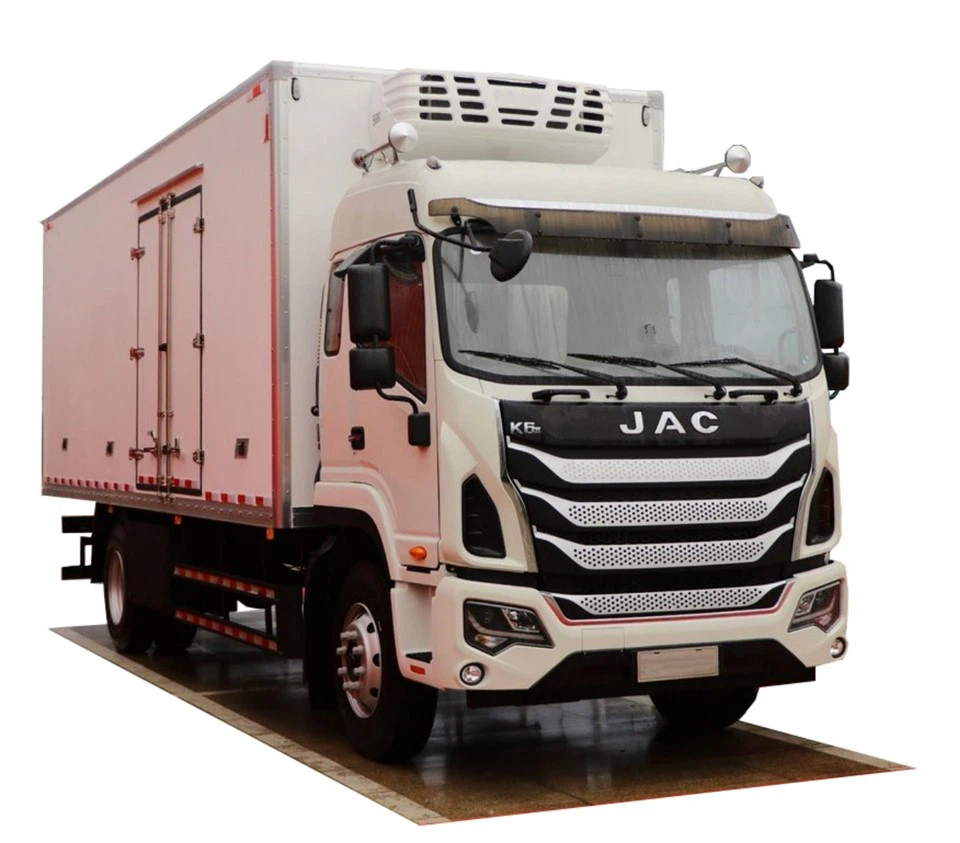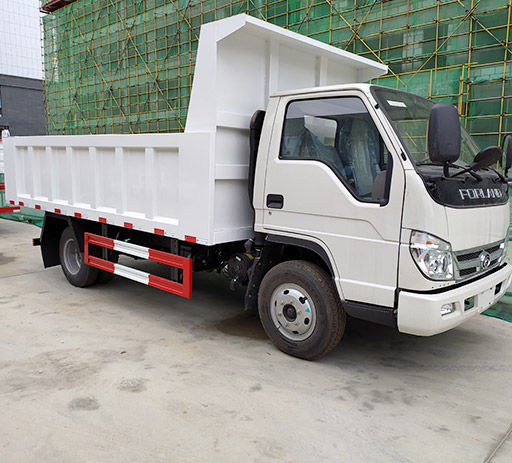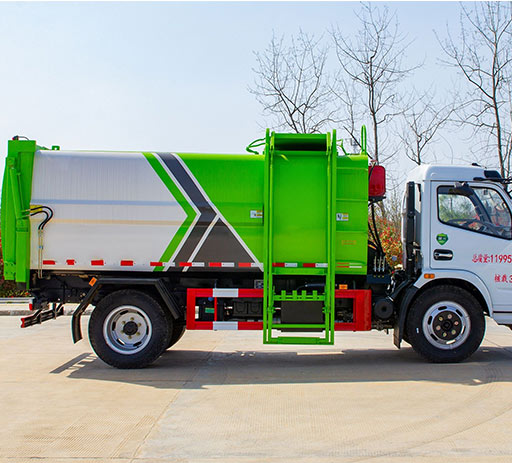Understanding Trash Truck Parts: A Comprehensive Guide

When it comes to garbage collection and waste management, trash trucks play a vital role. These specialized vehicles are equipped with unique parts designed to handle heavy loads and facilitate efficient waste disposal. In this comprehensive guide, we will explore the various components of trash trucks, their functions, and practical insights on maintenance and repair. Whether you’re a fleet manager, a mechanic, or simply someone interested in the mechanics of trash trucks, this article will provide you with valuable information.
What Are Trash Trucks?
Trash trucks, also known as garbage trucks or refuse trucks, are large vehicles designed specifically for the collection and transportation of waste materials. They come in various designs and sizes, catering to different waste management needs, including residential, commercial, and industrial waste. Understanding the parts of a trash truck is essential for safe operations and maintaining efficiency.
The Main Components of Trash Trucks
1. Chassis
The chassis is the frame of the trash truck, providing structural support for all other components. It includes the following:
- Frame: The solid framework that supports the entire truck.
- Axles: Responsible for load-bearing and vehicle mobility.
- Suspension System: Essential for a smooth ride, absorbing shocks from uneven surfaces.
| Component | Function |
|---|---|
| Frame | Supports all parts of the truck. |
| Axles | Enables movement and load distribution. |
| Suspension | Improves ride quality and stability. |
2. Cab
The cab is the front section of the truck where the driver operates the vehicle. Key features include:
- Windshield: Provides visibility for the driver.
- Controls: Includes steering wheel, pedals, and dashboard instruments.
- Seating: Designed for comfort and safety during long shifts.
3. Load Body
The load body is the compartment that holds the waste material. It can be of two types:
- Rear Loader: Waste is loaded from the back, suitable for residential areas.
- Side Loader: Waste is collected from the side, effective for high-density urban areas.
Rear Loader Design
Features a large opening at the rear, with a compactor that compresses the waste to maximize space.
Side Loader Design
This model includes an automated arm that picks up bins, reducing manual labor and improving efficiency.
4. Hydraulic System
The hydraulic system powers the lift and compaction mechanisms of trash trucks. Its main components include:
- Hydraulic Pump: Converts mechanical energy into hydraulic energy.
- Hydraulic Cylinders: Move the compactor blade and the lift mechanism.
- Fluid Reservoir: Stores hydraulic fluid to maintain system pressure.
Understanding Hydraulic Systems
Hydraulic systems are crucial for efficient operations, allowing trucks to handle heavy loads with ease. Regular maintenance can prevent costly repairs.
5. Compaction Mechanism
The compaction mechanism compresses waste within the load body to optimize space and reduce the number of trips. It consists of:
- Compactor Blade: Moves back and forth to crush waste materials.
- Limit Switches: Ensure the compactor operates safely and efficiently.
6. Tailgate
The tailgate seals the load body and ensures no waste falls out during transport. Its features include:
- Locking Mechanism: Keeps the tailgate securely closed.
- Seals: Prevents leakage of fluids and odors.
Common Trash Truck Parts and Their Functions
1. Brakes
Brakes are essential for safety in any vehicle. Trash trucks are equipped with air brakes that provide strong stopping power even under heavy loads. Regular inspections are crucial to ensure their optimal functioning.
2. Tires
Tires designed for trash trucks must be durable, with deep treads to handle various terrains. Proper maintenance, including regular rotations and checks for wear, is vital for safety.
3. Lighting
Trash trucks are often used during early morning or night shifts, making proper lighting essential. Components include:
- Headlights: For visibility in dark conditions.
- Amber Lights: Indicate when the truck is stopped for refuse collection, notifying other road users.
4. Exhaust System
The exhaust system is critical for reducing emissions and ensuring the truck runs efficiently. Key components include:
- Muffler: Reduces noise from the engine.
- Exhaust Pipe: Directs harmful gases away from the truck.
Maintaining Trash Truck Parts
Proper maintenance of trash truck parts is essential for longevity and performance. Here are some practical tips:
1. Regular Inspections
Conduct routine inspections to identify worn-out or damaged parts. Key areas to inspect include:
- Brakes
- Hydraulic hoses
- Fluid levels (oil, hydraulic fluid)
2. Lubrication
Keep moving parts well lubricated to reduce friction and wear. Regularly lubricate:
- Hinges on the tailgate
- Hydraulic fittings
- Pivot points on the compactor
3. Cleaning
Keep the truck clean to prevent corrosion and equipment failure. Schedule regular washdowns, focusing on:
- Underbody to remove debris
- Windows and mirrors for better visibility
- Load body to eliminate odor
4. Replace Worn Parts Promptly
Continuously monitor worn parts and replace them immediately to prevent further damage. This includes:
- Tires showing signs of wear
- Brake pads that have reached their limit
- Hydraulic hoses that exhibit signs of cracking
Common Issues with Trash Truck Parts
1. Hydraulic Leaks
Hydraulic leaks can lead to inefficient operation and safety risks. Regularly check for fluid levels and inspect hoses for wear. If you notice any leaks, address them immediately to prevent further issues.
2. Brake Failure
Brake failure can occur due to wearing out or improper adjustments. Regular checks should be performed, focusing on the brake pads and fluid levels. Replace parts as needed to ensure safe stopping power.
3. Electrical Problems
Electrical issues may arise in lighting, signals, or the ignition system. Regularly test all electrical components and replace faulty wiring to maintain reliability.
Choosing the Right Trash Truck Parts
When purchasing trash truck parts, consider the following:
1. Quality
Select parts from reputable manufacturers known for durability and reliability. High-quality parts can prevent frequent replacements and ensure safety.

2. Compatibility
Ensure any parts you purchase are compatible with your specific make and model of a trash truck. Check manufacturer specifications to avoid mismatches.
3. Warranty
Look for parts that come with a warranty. This can save on repair costs and provide peace of mind regarding their longevity and performance.
Latest Innovations in Trash Truck Parts
As technology advances, new innovations are being incorporated into trash truck parts to improve efficiency and reduce environmental impact. Some current trends include:
1. Electric Trash Trucks
Electric trash trucks are becoming popular as cities aim for greener waste management solutions. These trucks produce zero emissions and operate more quietly than conventional diesel models.

2. Smart Technology
Equipping trash trucks with smart technology helps optimize routes and monitor vehicle health, leading to improved fuel efficiency and reduced operational costs.
3. Advanced Compaction Systems
Modern compaction systems are designed to maximize load capacity and minimize the number of trips to the landfill, enhancing overall operational efficiency.
Frequently Asked Questions (FAQs)

1. What are the benefits of regular trash truck maintenance?
Regular maintenance can prolong the life of your trash truck, improve safety, reduce repair costs, and enhance operational efficiency.
2. How often should I inspect my trash truck?
It’s recommended to perform inspections at least once a month, or more frequently if the truck is used heavily or under harsh conditions.
3. What are the signs of hydraulic system failure?
Some common signs include fluid leaks, erratic movements, and decreased lifting capabilities. Address these issues as soon as they are noticed.
4. Can I perform repairs on my trash truck myself?
Some minor repairs can be handled by knowledgeable individuals, but complex issues, especially related to hydraulics and the braking system, should be addressed by professionals.
5. How do I choose the right trash truck for my needs?
Consider factors such as load capacity, fuel efficiency, and the type of waste you’ll be collecting. This will help you choose a truck that suits your operational requirements.
6. What should I do if my trash truck breaks down?
Immediately stop using the vehicle to prevent further damage and contact a qualified mechanic. Ensure safety protocols are followed when towing or lifting the truck.
